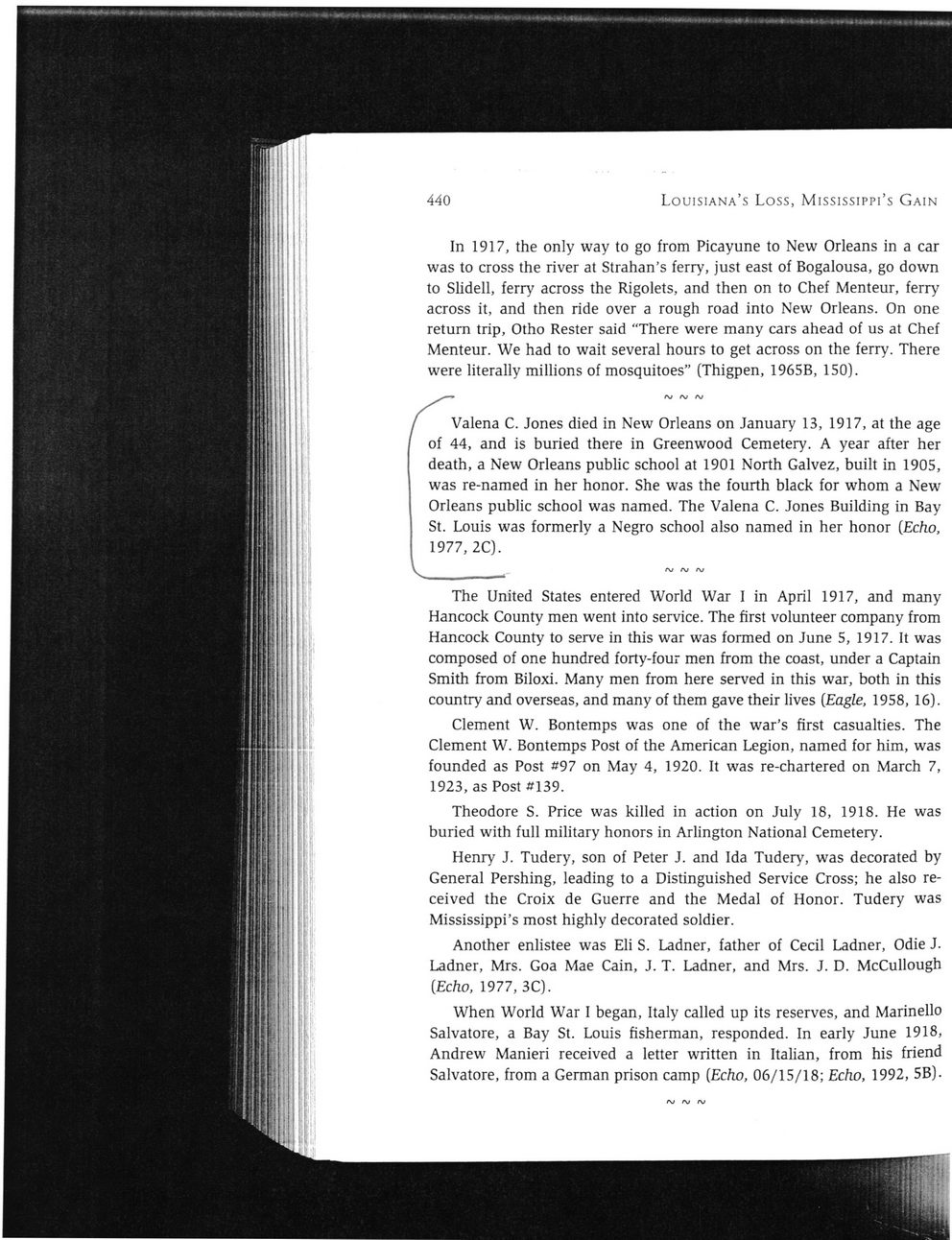This text was obtained via automated optical character recognition.
It has not been edited and may therefore contain several errors.
440 Louisiana?s Loss, Mississippi?s Gain In 1917, the only way to go from Picayune to New Orleans in a car was to cross the river at Strahan?s ferry, just east of Bogalousa, go down to Slidell, ferry across the Rigolets, and then on to Chef Menteur, ferry across it, and then ride over a rough road into New Orleans. On one return trip, Otho Rester said ?There were many cars ahead of us at Chef Menteur. We had to wait several hours to get across on the ferry. There were literally millions of mosquitoes? (Thigpen, 1965B, 150). Galena C. Jones died in New Orleans on January 13, 1917, at the age of 44, and is buried there in Greenwood Cemetery. A year after her death, a New Orleans public school at 1901 North Galvez, built in 1905, was re-named in her honor. She was the fourth black for whom a New Orleans public school was named. The Valena C. Jones Building in Bay St. Louis was formerly a Negro school also named in her honor [Echo, 1977, 2C). The United States entered World War I in April 1917, and many Hancock County men went into service. The first volunteer company from Hancock County to serve in this war was formed on June 5, 1917. It was composed of one hundred forty-four men from the coast, under a Captain Smith from Biloxi. Many men from here served in this war, both in this country and overseas, and many of them gave their lives (Eagle, 1958, 16). Clement W. Bontemps was one of the war?s first casualties. The Clement W. Bontemps Post of the American Legion, named for him, was founded as Post #97 on May 4, 1920. It was re-chartered on March 7, 1923, as Post #139. Theodore S. Price was killed in action on July 18, 1918. He was buried with full military honors in Arlington National Cemetery. Henry J. Tudery, son of Peter J. and Ida Tudery, was decorated by General Pershing, leading to a Distinguished Service Cross; he also received the Croix de Guerre and the Medal of Honor. Tudery was Mississippi?s most highly decorated soldier. Another enlistee was Eli S. Ladner, father of Cecil Ladner, Odie J. Ladner, Mrs. Goa Mae Cain, J. T. Ladner, and Mrs. J. D. McCullough (Echo, 1977, 3C). When World War I began, Italy called up its reserves, and Marinello Salvatore, a Bay St. Louis fisherman, responded. In early June 1918, Andrew Manieri received a letter written in Italian, from his friend Salvatore, from a German prison camp (Echo, 06/15/18; Echo, 1992, 5B).

Jones, Valena C 010